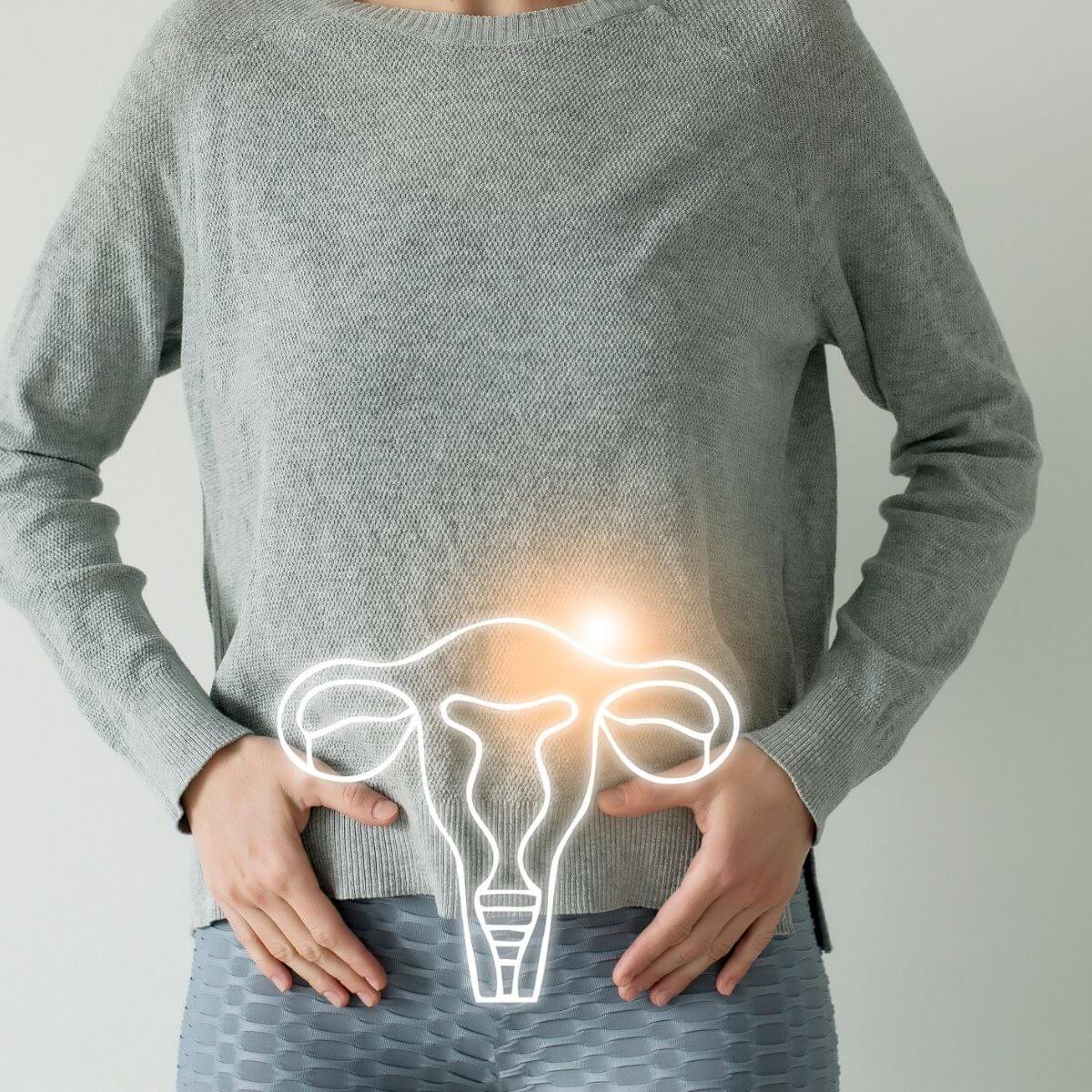I’m not sure there’s any situation where I’ll ever forget the moment I received my first positive pregnancy test.
I’d gone through my embryo transfer, suffered through the two-week wait, and gone back to my physician for a blood pregnancy test…then, I waited. The seconds, minutes, and hours crept by. I spent my day consumed with thoughts about whether or not a baby was about to enter my life.
I assumed that this wait was the hard part.
When the phone rang, and a kind nurse offered me congratulations and told me the transfer had been successful, my world flipped on its axis.
I was going to be a mother! Our infertility challenges were behind us, and we were about to set out on the most incredible of journeys…parenthood.
Quickly, though, my joy was displaced by anxiety.
While I’d thought getting pregnant was the hard part, I now knew what it felt like to have a baby growing inside my belly. I understood the overwhelming emotions that come with the knowledge that conception had taken place.
I also realized that getting pregnant was only the beginning; keeping that pregnancy was a whole other ballgame.
As I proceeded with my fertility appointments to track my hCG levels and monitor my baby’s progress, I heard the term “viable pregnancy” thrown around more than once.
I caught myself falling down a rabbit hole of questions about what this term could mean.
Isn’t pregnancy just a pregnancy?
For anyone who’s currently pregnant or hopes to become pregnant, viability is an essential part of the process. Therefore, it’s crucial to examine the differences between a viable pregnancy, non-viable pregnancy, and what to expect along the way.

This site contains affiliate links, meaning that we earn a small commission for purchases made through our site. We only recommend products we personally use, love, or have thoroughly vetted.
What is a “Viable Pregnancy”?
You might assume that viability has something to do with the conclusion of a woman’s first trimester of pregnancy, especially since this is typically the threshold expectant mothers are hoping to pass to guarantee a successful birth.
After all, 85% of women who miscarry will do so during the first twelve weeks of pregnancy.
Despite this fact, viability and miscarriage are not always the same.
Instead, healthcare practitioners define a viable pregnancy as the earliest point a baby could be born and still survive outside its mother’s womb.
Typically, any baby born before 24 weeks has less than a 50% chance of survival. Therefore, once a pregnancy passes that 24-week threshold, it’s said to be a viable pregnancy. Before that time marker, doctors would describe the pregnancy as a “non-viable pregnancy.”
Timelines aren’t the only way to define a non-viable or viable pregnancy, however.
Doctors also use ultrasound technology and other diagnostic tools to determine the viability of an embryo during early pregnancy. If a baby is no longer growing and progressing, it can also be listed as a non-viable pregnancy because it has zero chance of survival.
Other conditions and circumstances qualify as non-viable pregnancies. These include:
- Ectopic Pregnancies: Where the embryo implants outside of the central uterine cavity.
- Blighted Ovum: When a fertilized egg implants, but an embryo does not start to grow.
- Molar Pregnancies: When a tumor begins to grow at the beginning of a pregnancy.
- Lack of Fetal Heartbeat
- Congenital Defects: Certain congenital disabilities make it impossible for a baby to survive outside of the womb, such as heart defects and neural tube defects
If You Have a Slow Rising Beta HCG, is Viable Pregnancy Still Possible?
When my husband and I were undergoing our first IVF cycle, I assumed that all we needed was a single positive blood pregnancy test to determine whether or not the treatment had been successful.
What I didn’t realize, is that I would actually undergo a series of blood tests, known as Beta-hCG tests, to prove that my human chorionic gonadotropin levels (hCG) were increasing.
Once an embryo implants into the uterus, your body will begin producing hCG to help develop progesterone. Progesterone is a steroid hormone that helps protect your growing baby throughout pregnancy.
Upon the start of its production, the amount of hCG detected in your body should nearly double every two to three days until it reaches its peak around week 8 of pregnancy.
Unfortunately, if your beta tests show that your hCG levels aren’t increasing the way they need to be, this could indicate a non-viable pregnancy.
While it’s not impossible that a slow-rising beta hCG level could end up as a viable pregnancy, studies have shown that the likelihood of viability is minimal.

Can a Non-Viable Pregnancy Be Misdiagnosed?
So, you’re experiencing some unusual early pregnancy signs or successful implantation symptoms but then receive the sad news that your pregnancy is not considered viable.
This can be confusing and stressful.
Plus, it can leave you wondering whether or not your “non-viable pregnancy” was misdiagnosed.
Keep in mind that, while the medical equipment of today is rather sophisticated, it’s also not perfect.
It’s an unfortunate reality that miscarriages and ectopic pregnancies (two common types of non-viable pregnancies) are sometimes misdiagnosed, especially in very early pregnancy.
In an interview with Dr. Peter Doubilet, a licensed radiologist specializing in obstetrics and gynecology, he discusses the importance of exercising caution when diagnosing non-viable pregnancies during the first few weeks.
“Unless the doctor is sure that the woman has a miscarriage or an ectopic pregnancy, the doctor should err on the side of waiting, as long as the woman is stable and shows no signs of serious internal bleeding.”
While a misdiagnosis is rare, mistakes do happen. If you feel strongly that your doctor might be incorrect, be your own medical advocate. Ask them to check again or seek a second opinion.
What Will a Non-Viable Pregnancy Ultrasound Show?
If you’re experiencing a non-viable pregnancy, ultrasound technology will help diagnose the problem. There are specific definitive criteria that doctors will use to prove whether your not your pregnancy is viable, including:
- An empty gestational sac with a mean diameter of at least 25mm, but doesn’t have an embryo inside.
- If a gestational sac has a yolk sac, but 11 or more days later, there’s no embryo with a heartbeat.
- When a baby has a crown-to-rump length of at least 7mm, but no fetal heartbeat.
Viable Pregnancy Signs & Symptoms
From lightning crotch to pregnancy stress, carrying a baby comes with a plethora of strange symptoms. These can be uncomfortable and unpredictable.
As if the day-to-day side effects weren’t enough, being pregnant comes with an immense amount of worry regarding the safety of your little one.
The later trimesters of pregnancy come with the benefit of kicks and movements to clue you in on your baby’s well-being.
But the first twelve weeks can be stressful since there’s no way to tell what is or isn’t happening in your uterus without an ultrasound.
While viable pregnancy signs typically consist of the “normal” pregnancy woes, like morning sickness, moodiness, or headaches, non-viable pregnancy symptoms can be more concerning.
The signs of a missed miscarriage, or impending miscarriage, could include:
- Mild to Severe Cramping and/or Back Pain
- White or Pink-Tinged Vaginal Discharge
- Clot-Like Tissue that Passes from Your Vagina
- Weight Loss
- Painful Contractions that Occur Every 5 to 20 Minutes
- Mild to Severe Bleeding

Later in pregnancy, signs of a non-viable pregnancy include early labor and/or your water breaking, requiring delivery before the 24-week mark.
It’s also important to realize that when it comes to non-viable pregnancy symptoms, a sudden lack of symptoms could indicate something is wrong.
If you were feeling normal early pregnancy symptoms and they’ve suddenly subsided, this could be a clue that your baby has stopped developing and your body is no longer producing hCG.
This isn’t always the case, though. Make an appointment with your doctor if you no longer “feel pregnant,” and you’re concerned.
When is a Viable Pregnancy “Safe?”
While bad situations can arise at any point in a woman’s pregnancy, getting past the 24-week mark of your gestational period is typically the “safe zone.”
If your child arrives anytime after the 24th week of pregnancy, they will have around a 60-70% chance of survival. Those numbers increase to 80-90% at 28 weeks of pregnancy.
Try to Put Aside Your Viable & Non-Viable Pregnancy Worries (Easier Said than Done, We Know!)
It’s easy to get wrapped up in questions about whether or not your pregnancy is viable.
Trust me, I know.
During both of my pregnancies, I found my mind continually clouded with a barrage of “what-ifs” about my baby’s safety:
What if my water breaks?
What if I start to bleed?
Why don’t I feel pregnant today?
What if I go into labor?
There’s really no end to the number of concerns we face on a day-to-day basis when we’re expecting.
No one wants to deal with the mental and physical pain that can come with a non-viable pregnancy, but there’s something to keep in mind!
Whatever is happening with your baby is not your fault.
Life is unpredictable, things happen, and our bodies aren’t the perfect machines we like to believe they are. So, while 10-20% of known pregnancies might end in a miscarriage, the silver lining is that 80-90% do not.
So take a deep breath and know that you’re armed with the knowledge you need about viable pregnancy.
And if you have questions or concerns, reach out to women who’ve been through what you are going through. You should also relay your questions to your healthcare team to help calm your fears.
Are concerned about having a viable pregnancy during your first trimester? Tell us all about it in the comments.








